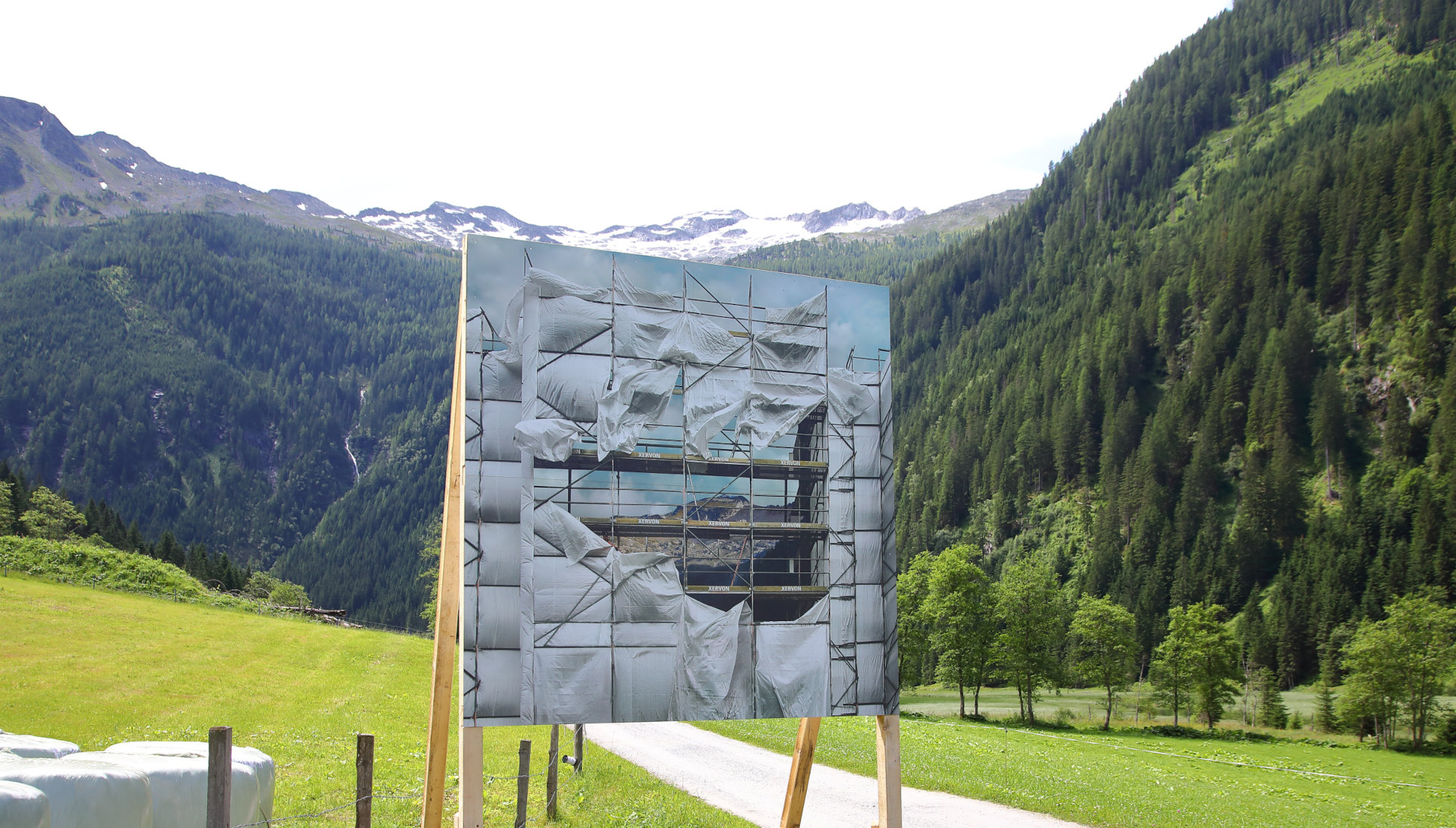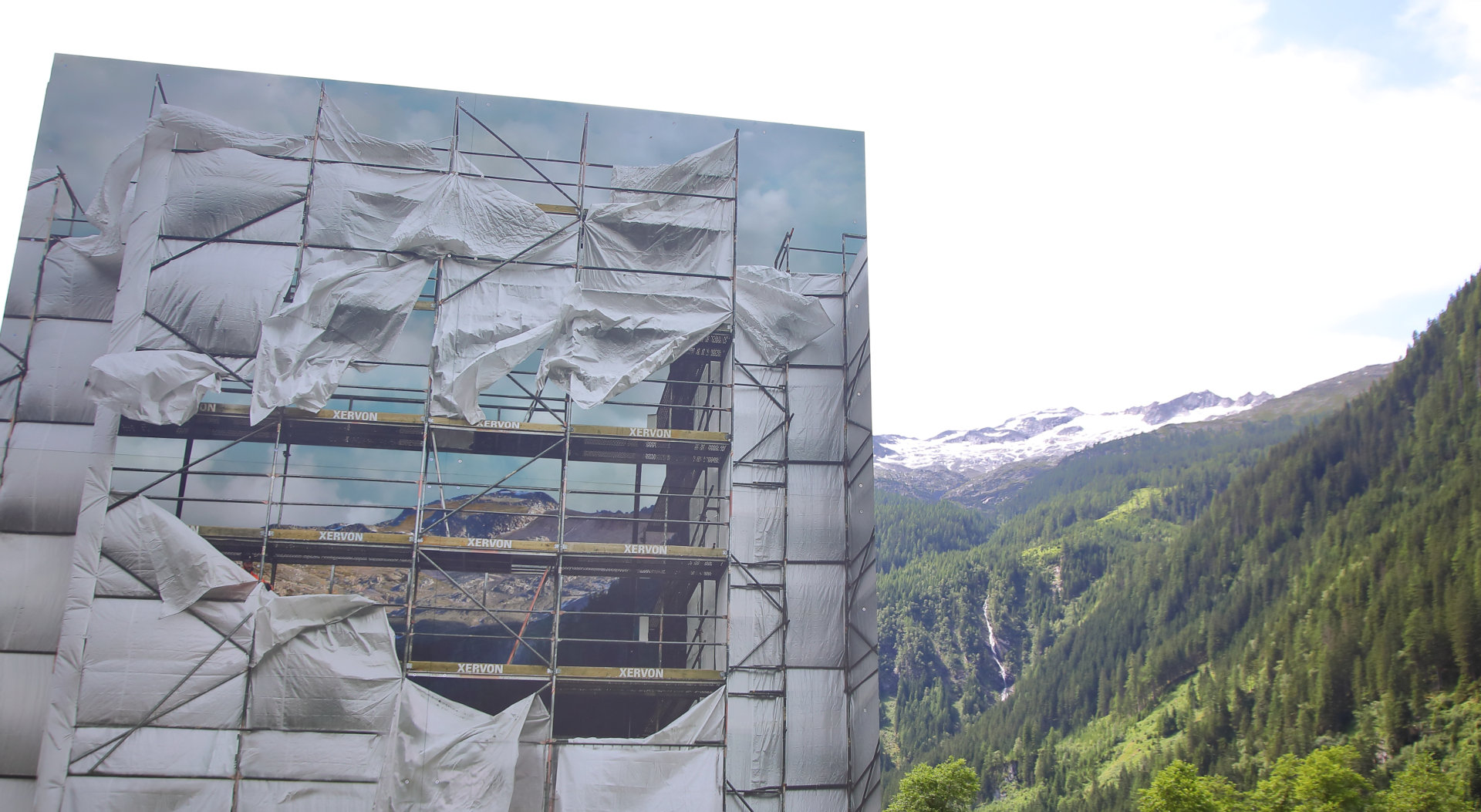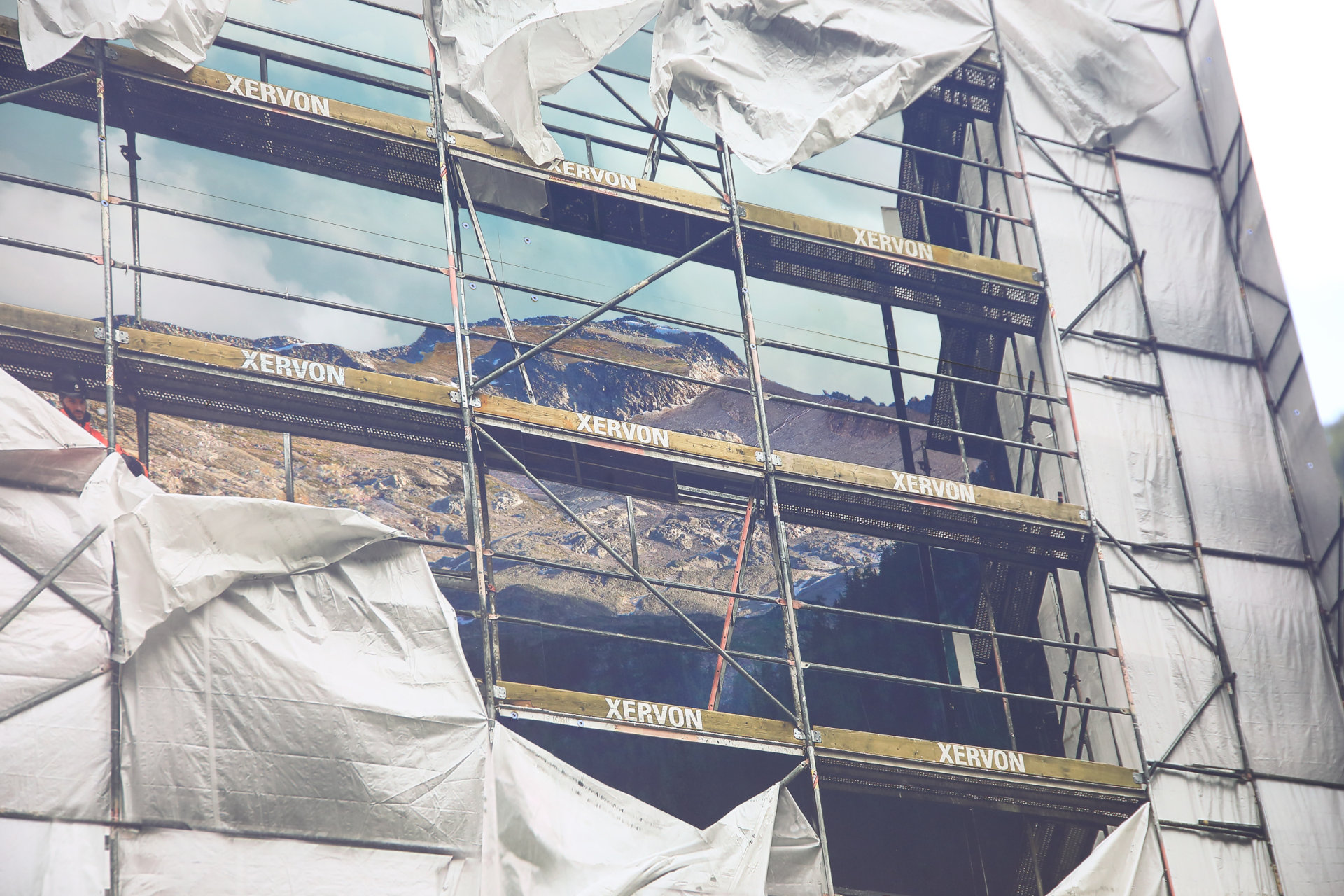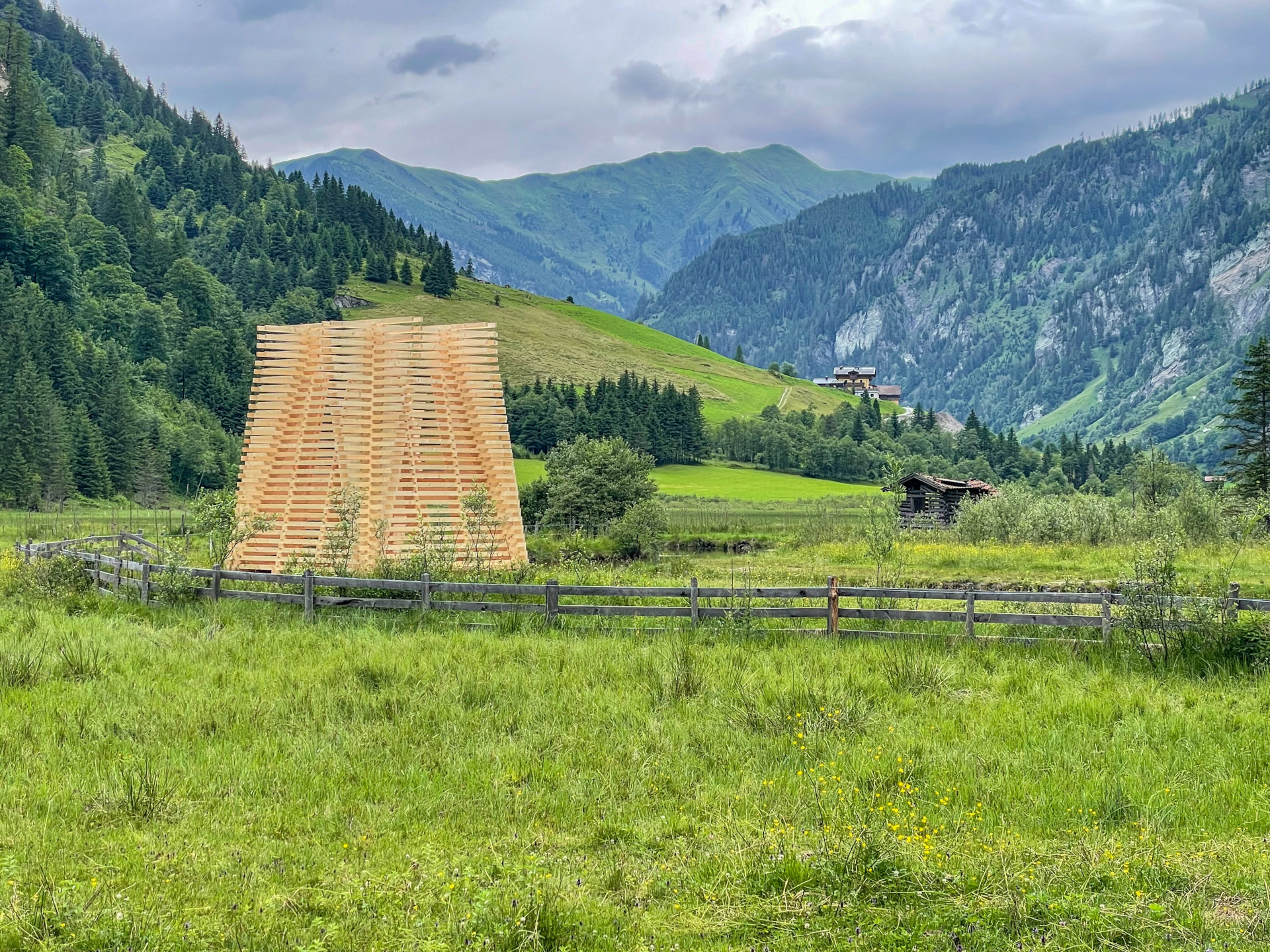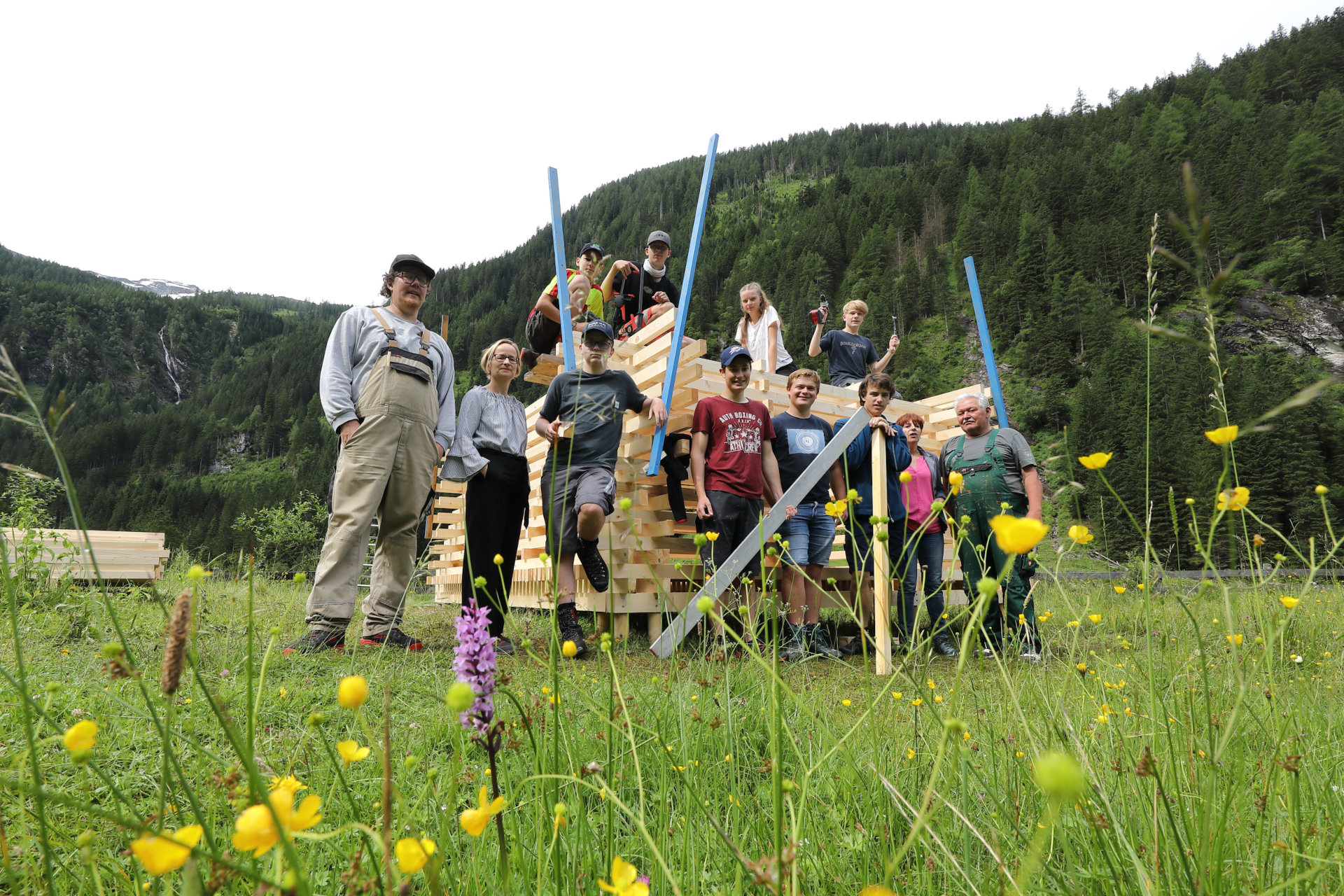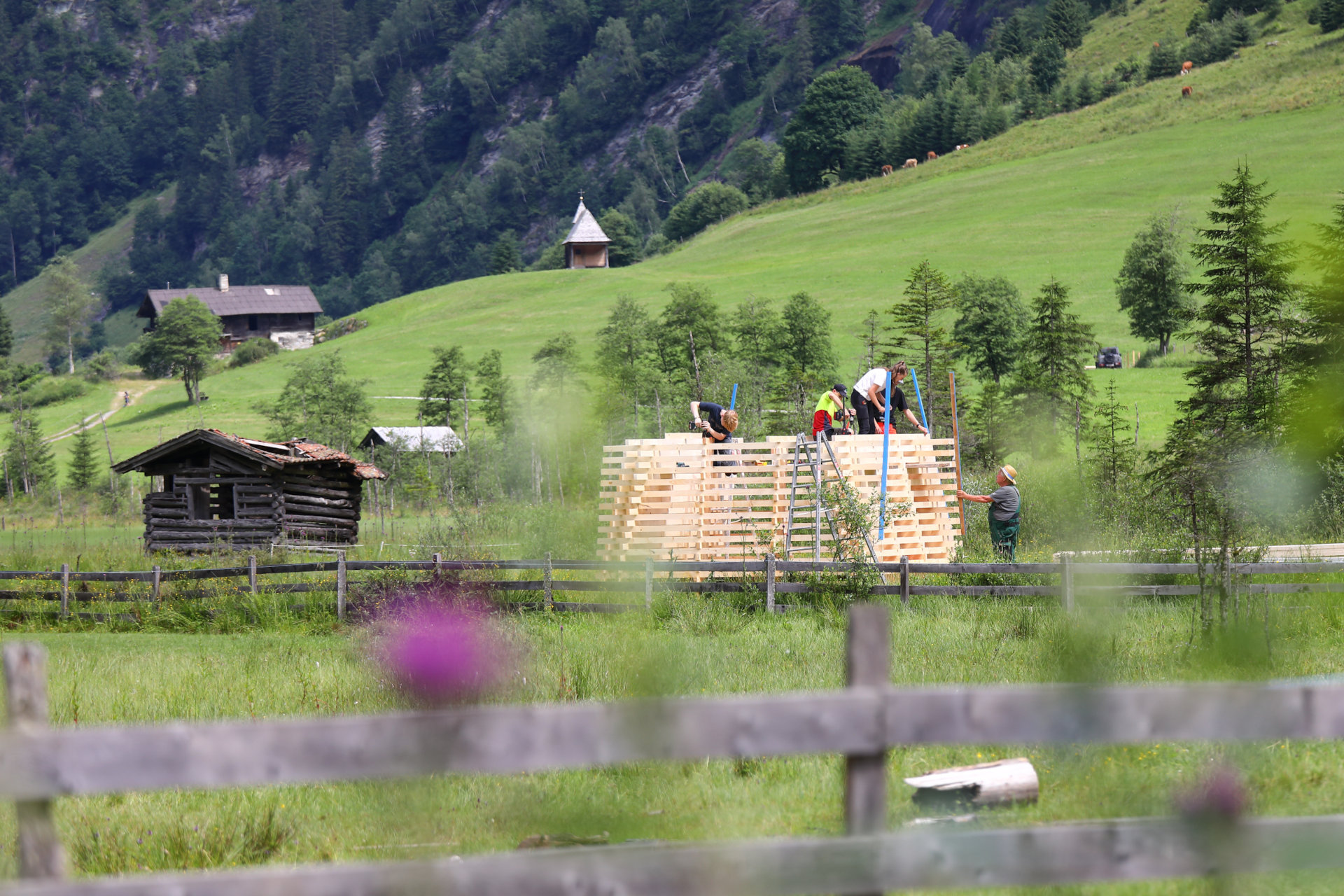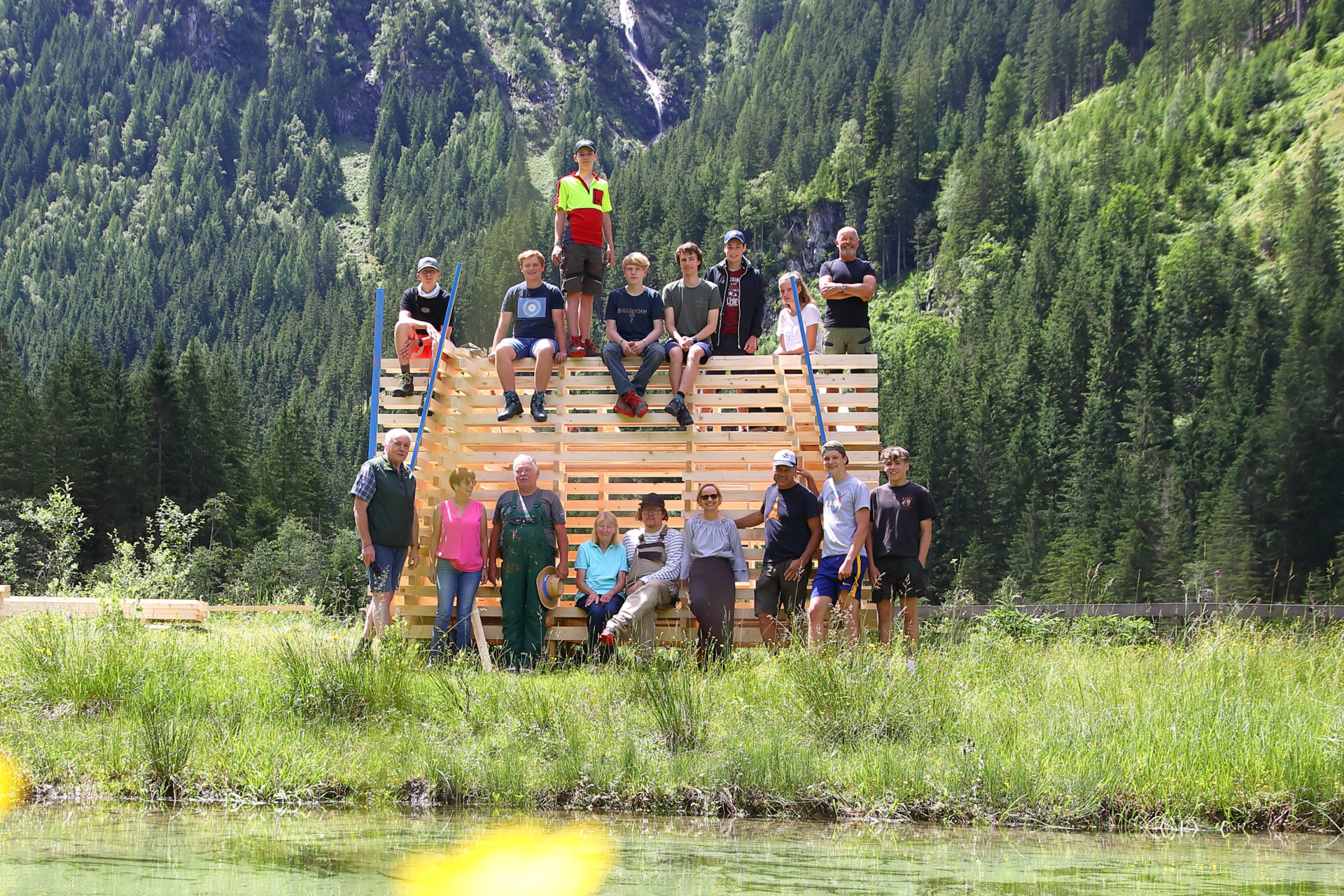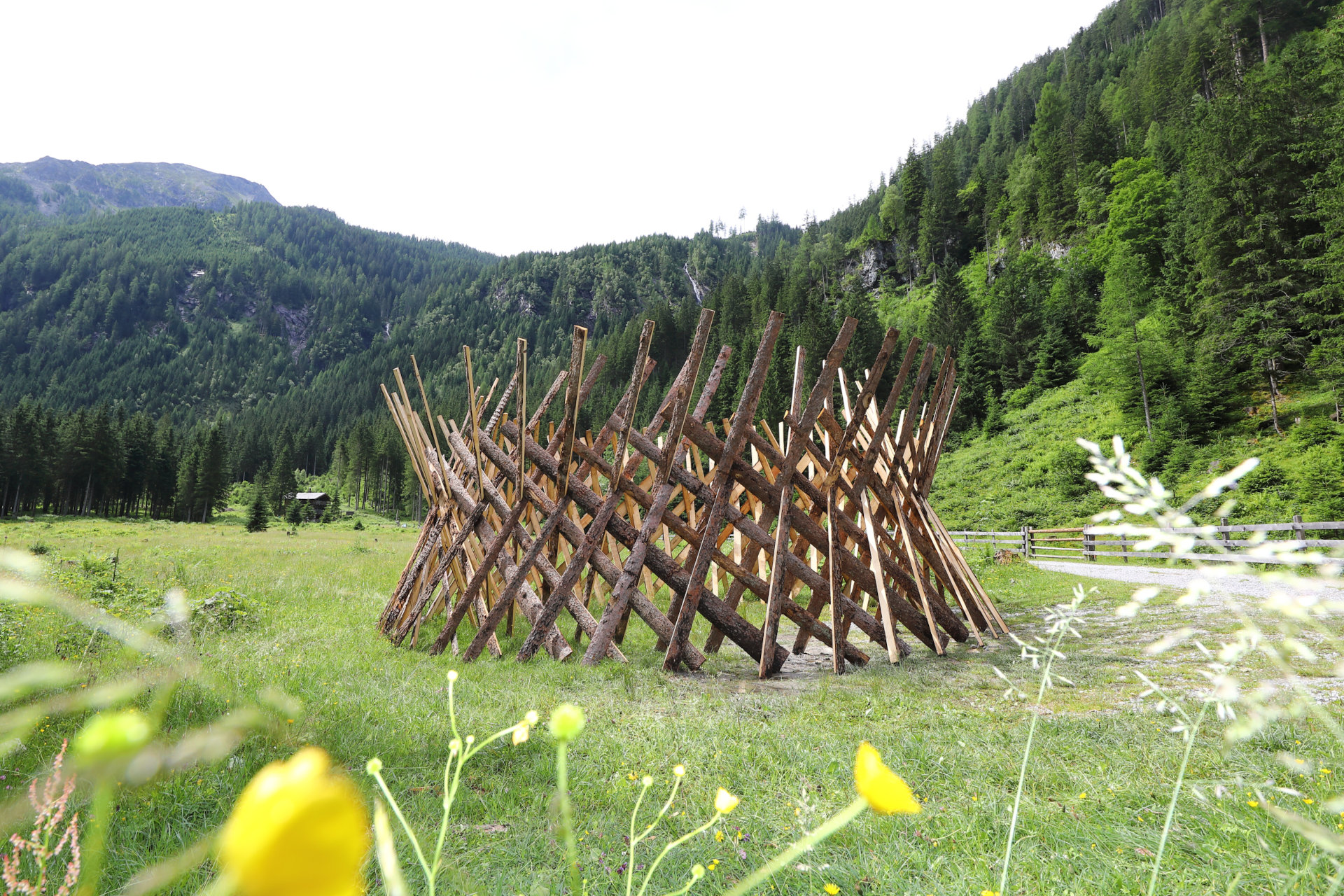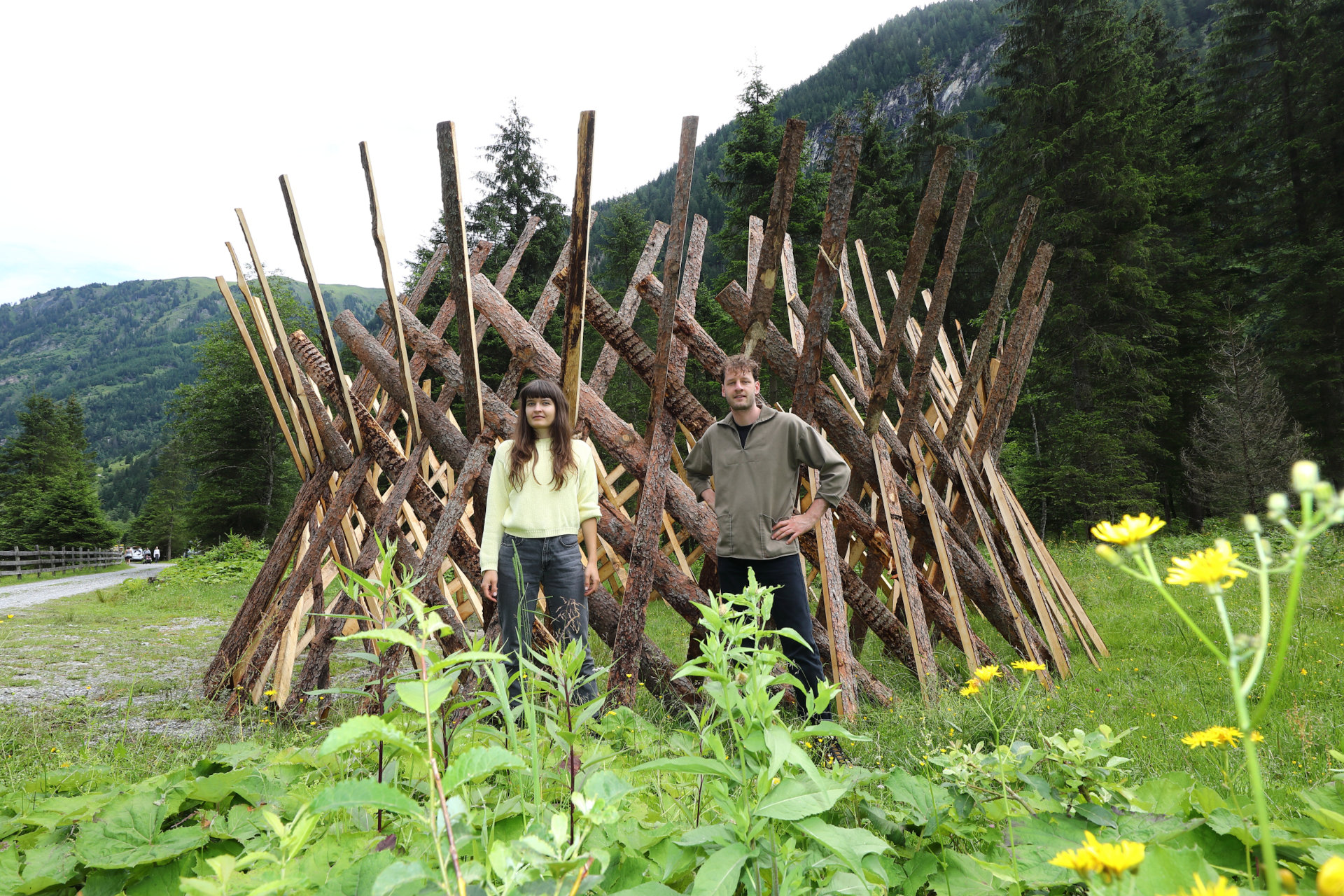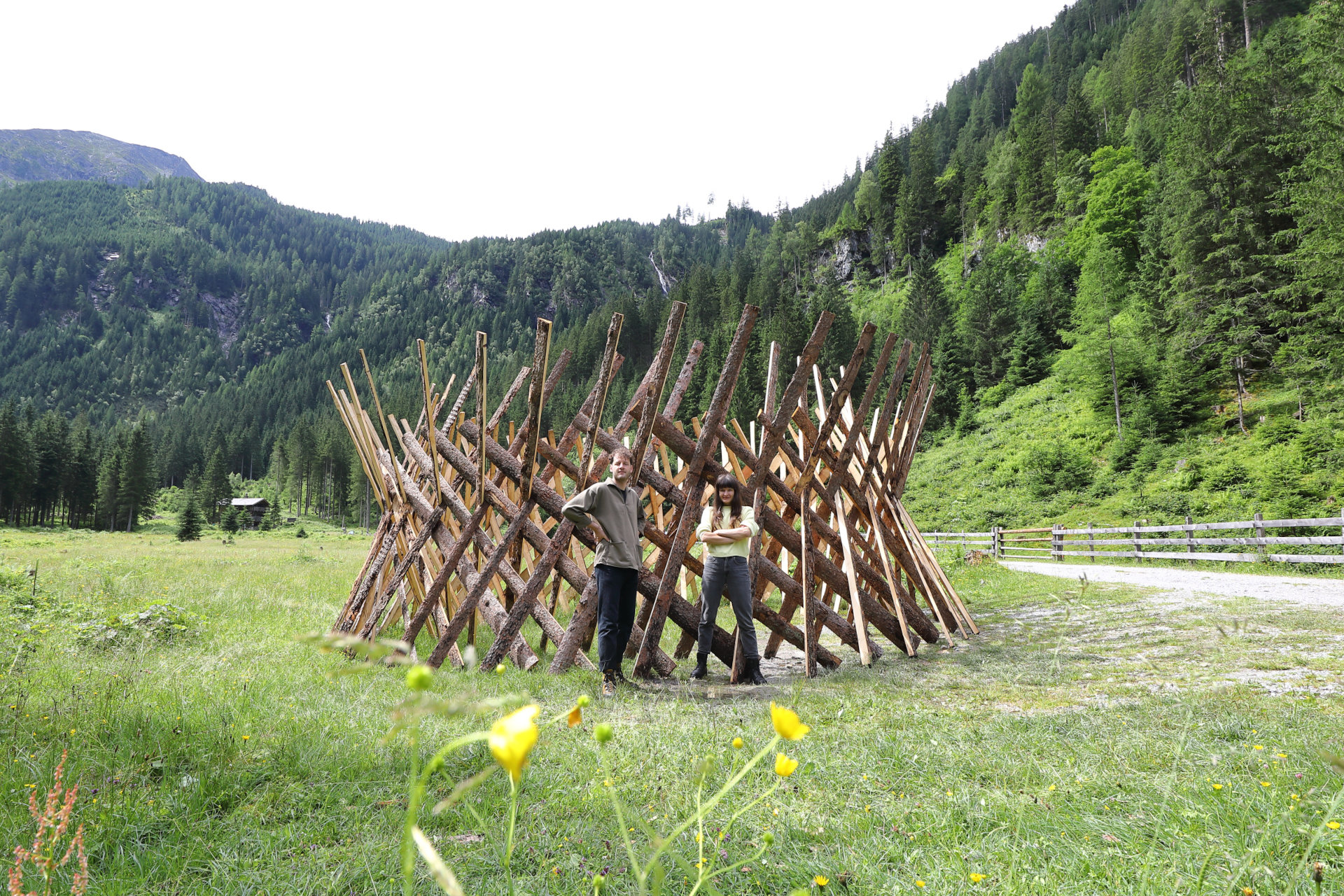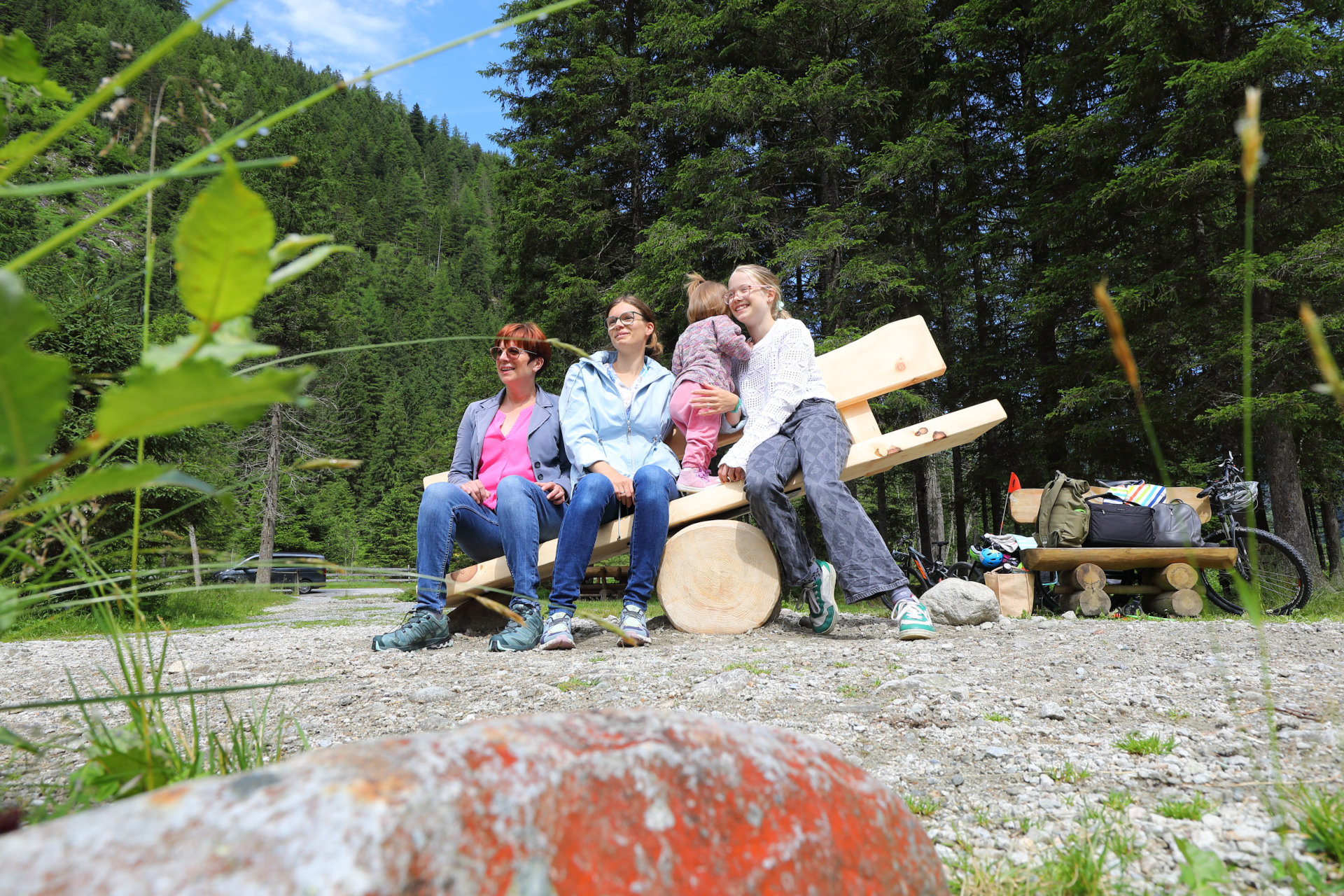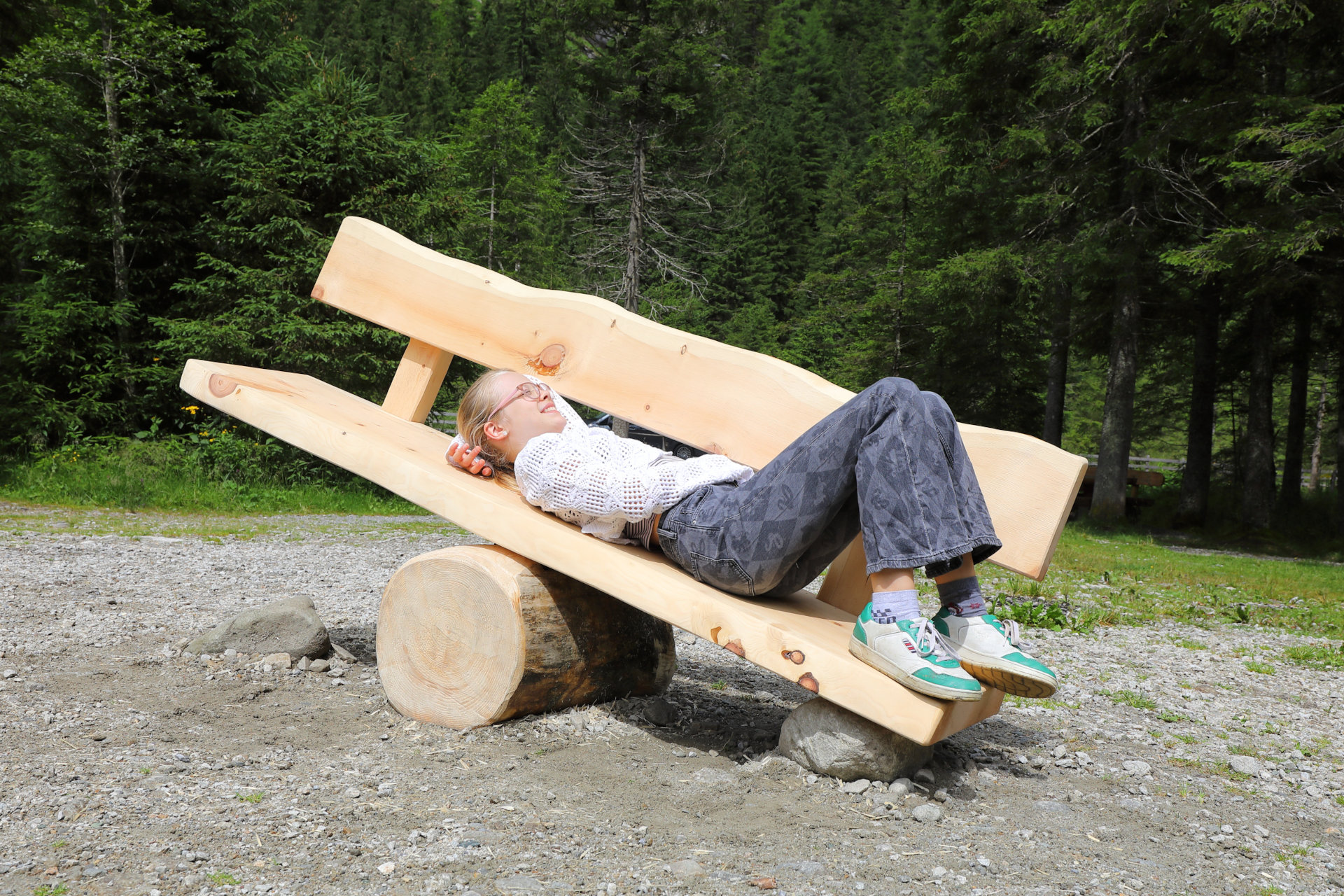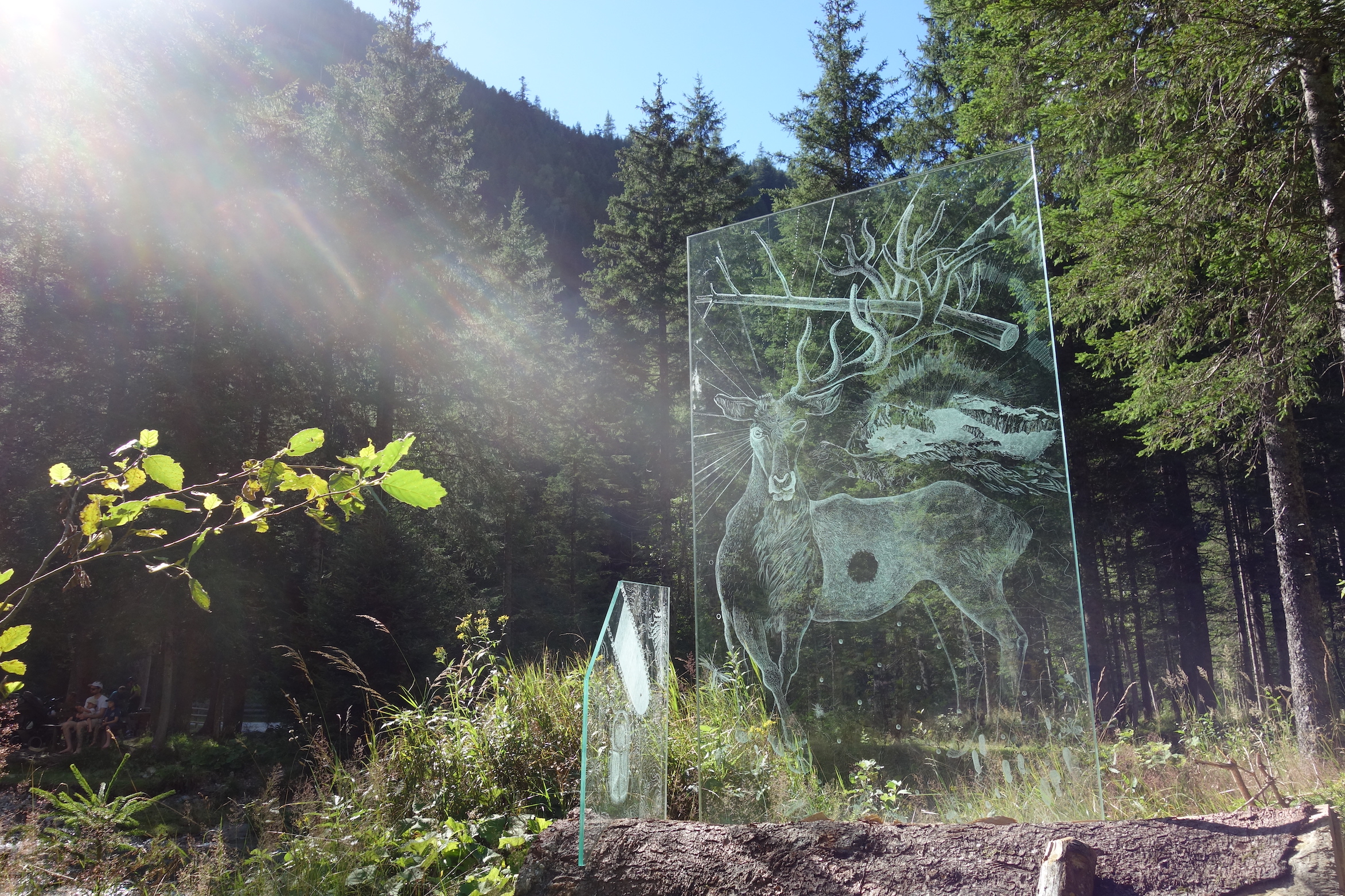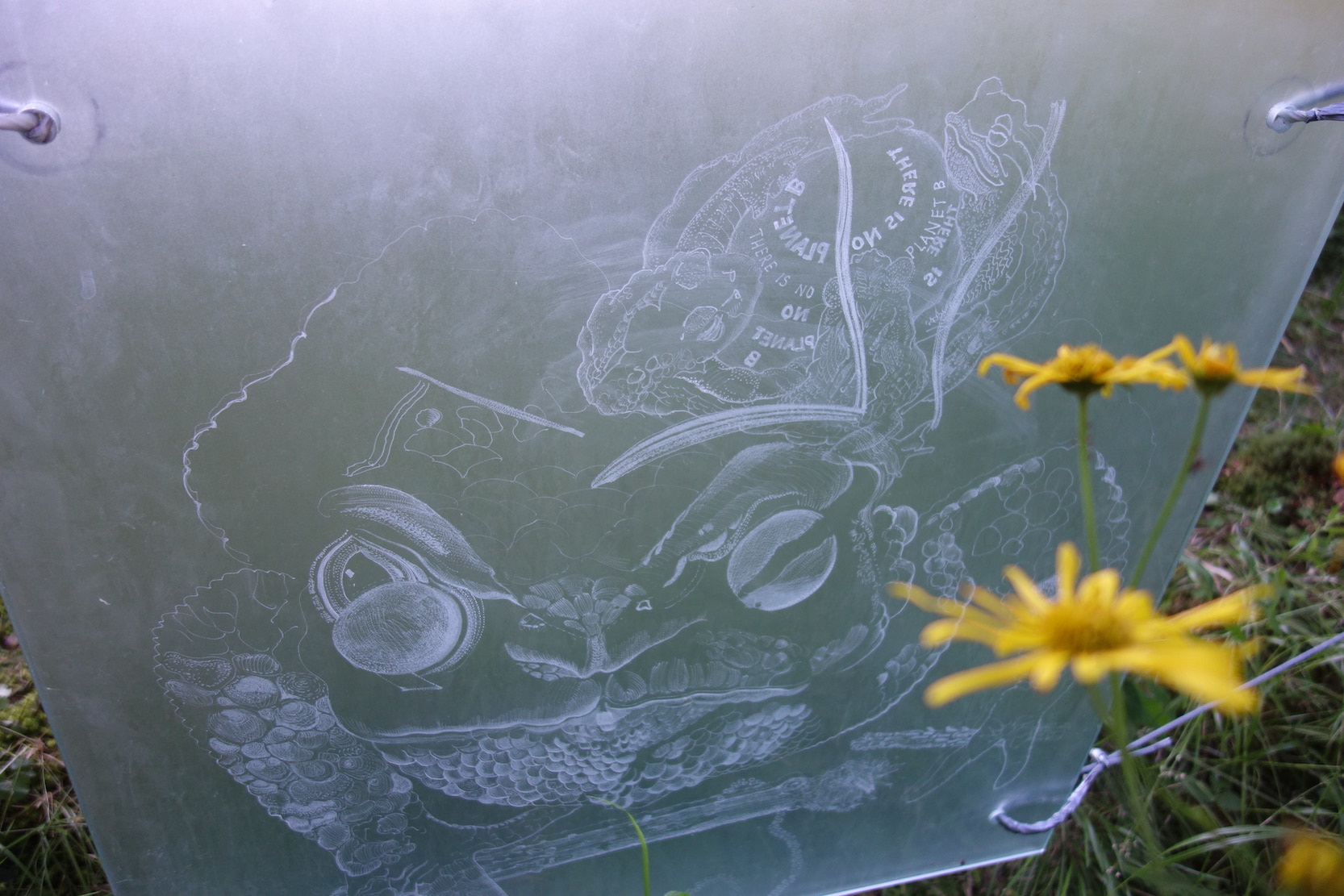The measurement of nature
KEES
JÖRG AUZINGER
The Keeskogel with white construction tarp asks us to think about the relationship between reality and photography. Instead of ice and snow, glacial debris becomes visible. Reality becomes hyperreality in Auzinger’s image: the glacier, which is saved over the summer by means of tarpaulin in order to protect it from too much solar radiation, has become reality with the climate crisis and is reinterpreted in the photographic work as fragile building tarpaulin fluttering in the wind. The tarpaulins torn open by the storm reveal the view of the now more snowless mountain peak. At the same time, the erected scaffolding indicates a temporary and transitory situation and tells us that something is under reconstruction here. In Auzinger’s photographic work, the saving tarpaulin is not a protective cover, but rather offers (visual) protection from the bitter reality. Is the Hüttschlager glacier also threatened with complete disappearance?
With his work, Auzinger tries to create awareness for the regional effects of global climate change and reminds us that a radical rethinking is needed in society. Climate protection as a task for politics, culture and society.
The photo work “Kees” is a further development by Auzinger from his series “Destinesia”, which he adapted and reinterpreted for Hüttschlag. In the photo series “Destinesia” visual and content-related spaces and narratives are created that lie behind the visible layers and serve as food for thought for the viewers. Associations and memories are given space and the perception of reality is questioned. In Auzinger’s photographs, visual information is placed on a meta-level that allows for individual interpretations. The use of metaphors creates an encoding of the image content that invites a creative contemplation of the image.
HEUSTADEL-VARIATIONS
CLEMENS BAUDER
Clemens Bauder’s works are located at the interface of architecture and art and range from usable sculptures to experimental spatial installations.
As in many mountain regions, small hay barns are closely linked to the landscape in Hüttschlag. For the kunstroas, Bauder is developing micro-architectures that tie in with the traditional building form of round log buildings and reinterpret them. For this, themes such as outlook, community and play are taken up. By stacking lying timbers on top of each other, “hay barn variations” are created that allow the landscape to be experienced in a variety of ways.
Heustadel-Variationen © TVB Großarltal; Clemens Bauder
With students of the HTL Kuchl and their teacher Karl Entacher, the wooden sculptures were realized in a joint construction project. By working as a collaborative team, the students gained practical hands-on skills, but the three-day “learning by doing” camp in Hüttschlag also promoted qualifications such as social and personal skills. Problems that arise during construction are mastered jointly, team spirit and togetherness are promoted.
LANDGRABBING
DORA MEDVECZKY & FABIO SPINK
Landnahme © TBV Großarltag
A circular peasant wooden fence – Fabio Spink and Dóra Medveczky’s work “Landgrabbing” examines the fence in its historical-social development, reviving an old production technique.
“The first person who fenced off a piece of land and took it upon himself to say: this is mine and found people simple-minded enough to believe him was the true founder of bourgeois society. How many crimes, wars, murders, how much hardship and misery and how many horrors would have been spared to the human race by the one who tore out the stakes or filled up the ditch and shouted to his fellow men: Beware of listening to this impostor; you are lost if you forget that the fruits belong to all and the earth to no one.” (Jean-Jacques Rousseau, Discourse on Inequality)
Fabio Spink and Dóra Medveczky explore how fences and ramparts have shaped social coexistence and inequality. While in the Middle Ages the common law was still predominant, stating that usable land belonged to a village and could be used by all as common property, the early period saw the so-called Enclosure Movement, i.e. the creation of fenced land areas. Access to land that had provided wood and food for generations was thus impossible, and land became a commodity.
But fences also mean territorial borders, migration and transnational escape movements. As a visitor, you stand in front of the fence, hardly able to get through. Inside or outside? To belong or to be excluded? An experience that people on the run make again and again.
Economic globalization goes hand in hand with territorial demarcation. But what does the idea of space and territory mean for our democratic societies? When fences suddenly determine politics? Through a hole in the fence we finally reach the other side. Arrived at last or trapped after all?
IN BALANCE
HERI & SALLI
Im Gleichgewicht © TVB Großarltal
Walker benches are everyday objects whose raison d’être in the landscape is to give walkers the opportunity to rest, perhaps enjoy a view or have a snack. The bench invites passivity and daydreaming.
The bench by heri & salli is different. Outwardly not unlike its ordinary sisters, it functions like a seesaw. The bench becomes an object of activity, its use requires a sense of balance and a certain amount of concentration. Enjoying the view or having a snack? Rather missing.
With their walker bench, however, heri & salli not only playfully put the triviality of an everyday object up for discussion. They also draw our attention to the fact that finding one’s own balance and living in equilibrium with nature is often what allows us to experience peace and contentment in everyday life. But what happens when ecosystems are thrown out of balance by man-made climate change? Climate change, species extinction, environmental destruction – man is massively changing the earth. The earth itself has always been changing, able to adapt; human overexploitation is primarily harming ourselves. So let’s take a seat, pause and together try to find the balance with ourselves, the counterpart and especially nature.
GLÄSER ÄUGEN LICHTER
INGRID SCHREYER
Gläser äugen Lichter © Ingrid Schreyer
We know this (already from childhood hikes): A grazing deer in the distance! Wow! Psst! The reflexive grab for the (cell phone) camera. The short triumph of capturing with the camera eye. Regardless of the mostly unconvincing result, the fascination of having seen something with one’s own eyes is more satisfying than the great high-tech images from the universe and the like.
For most people, experiencing nature is closely linked to their sense of sight, their power of observation. But who wants to have seen what? And doesn’t the vast majority of what happens in the forest remain hidden from our eyes? The tourist’s hunting eye covets the iconic deer, the child’s eye delights in the earthworm. Whether, conversely, the animal eyes(lights) delight in us humans? What would seeing “at eye level” be like?
Subtle, filigree glass engraving drawings, restrained, but still visible to the animals of the forest, want to stimulate just such questions of seeing and becoming aware. Forest creatures appear… in a certain way, in a different light. The fact that they elude the quick glance is part of the program. Binoculars are available.
